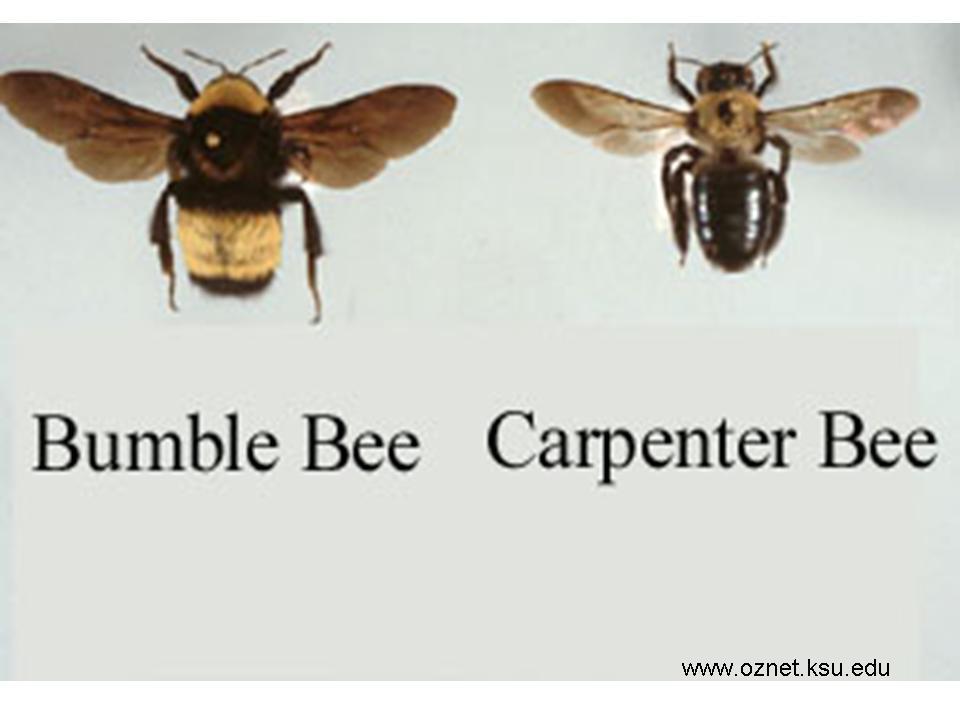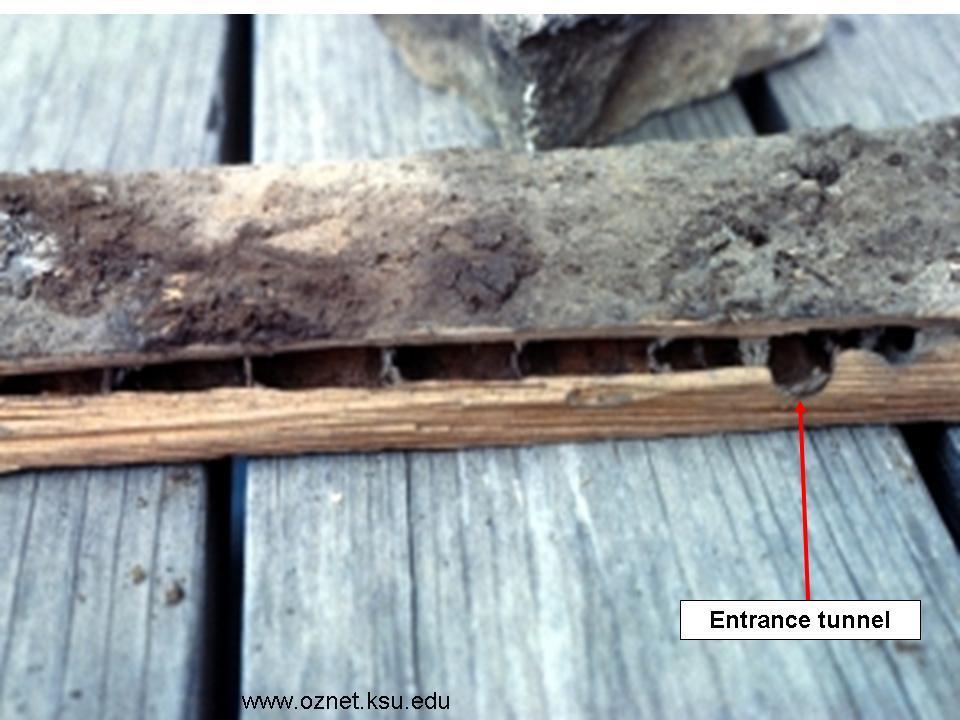Featured Arthropod
Carpenter BeesThe Insect Diagnostic lab is beginning to get a lot of calls about “big bees swarming around outside of homes”. These are Carpenter bees and resemble bumble bees but have bare abdomens that are a shiny black to iridescent green (Photo1). In the spring these bees, which overwinter as adults, are emerging and looking for other bees to mate with. The male bees can be rather aggressive and may “dive bomb” people in their vicinity. However, they are harmless as they can not sting. The females are capable of stinging but generally will not do so unless handled or molested.

|
| Photo 1 |
After mating in the spring, female carpenter bees tunnel into wood to lay their eggs, producing round holes about ½ inch wide (Photo 2). These eggs will develop throughout the summer and the young adults will spend the winter in these tunnels. The next spring the cycle begins again. The next generation of carpenter bees may use tunnels that are already there, they may enlarge or extend the current tunnels, or they may excavate new ones.

|
| Photo 2 |
Carpenter bees prefer to attack wood that is bare, weathered, and unpainted. They prefer softwoods such as redwood, cedar, cypress and pine. Common nesting sites are eaves, window trim, siding, decks, and outdoor furniture. The best way to avoid an infestation is to keep all exposed wood surfaces painted. Stains and varnishes will repel the bees to some degree but are not as effective as paint. Once an infestation has been detected, the tunnel entrances can be treated with an insecticide that has residual activity. Treating at night is most effective while the bees are inactive in the tunnels. The holes should be left open for a few days to allow the bees to come in contact with the insecticide and distribute it throughout the tunnels. Then, the holes can be plugged to prevent further use by carpenter bees and reduce the chances of wood decay.
| Holly Davis | |
| Insect Diagnostician | |
| May 2009 | |
For more information please visit: